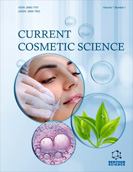Abstract
Background: Dandruff is a common scalp condition affecting half of the population of the world.
Objective: The current study aimed at developing anti-dandruff shampoos containing tea tree oil, which is believed to be effective against Malassezia furfur, a fungus involved in dandruff production.
Methodology: Various shampoos containing tea tree oil in 0.5 to 3% concentration were prepared after careful selection of various shampoo ingredients. The formulated shampoos were subjected to various quality tests such as pH, viscosity, foam production, dirt dispersion, wetting time, surface tension, solid contents, and antimicrobial activity against a model fungal strain, namely Candida albicans. The formu-lated shampoos were also compared with the marketed shampoos for quality attributes.
Results: The results revealed that tea tree oil shampoos had pH values in the range of 5 – 6, which is close to the slightly acidic skin’s pH and considered as good for hair. All other quality attributes were comparable to the marketed products. The marketed shampoos had superior antifungal activity due to the presence of zinc pyrithione or a higher concentration of salicylic acid or selenium sulfide. Notwithstanding, the tea tree oil shampoos demonstrated an appreciable antifungal activity due to synergistic effects of tea tree oil, sodium lauryl sulphate, and salicylic acid. Furthermore, the tea tree oil shampoos were stable during two months-long stability testing.
Conclusion: Thus, tea tree oil anti-dandruff shampoos have the potential to address the dandruff problem.
Keywords: Anti-dandruff, antifungal, formulation, shampoo, tea tree oil, marketed shampoos.
Graphical Abstract
[http://dx.doi.org/10.2174/1874372202014010022]
[http://dx.doi.org/10.1038/srep24877] [PMID: 27172459]
[http://dx.doi.org/10.29121/granthaalayah.v5.i1.2017.1685]
[http://dx.doi.org/10.1039/C5RA23174D]
[http://dx.doi.org/10.3390/cosmetics5030043]
[http://dx.doi.org/10.3390/cosmetics6010013]
[http://dx.doi.org/10.1016/j.bjbas.2014.11.005]
[http://dx.doi.org/10.1128/CMR.19.1.50-62.2006] [PMID: 16418522]
[http://dx.doi.org/10.1111/j.1365-2672.1995.tb05025.x] [PMID: 7730203]
[http://dx.doi.org/10.1067/mjd.2002.122734] [PMID: 12451368]
[http://dx.doi.org/10.1046/j.1467-2494.2000.00047.x] [PMID: 18503425]
[http://dx.doi.org/10.4103/JPBS.JPBS_214_18] [PMID: 31148886]
[http://dx.doi.org/10.1016/j.cis.2020.102330] [PMID: 33302055]
[http://dx.doi.org/10.4103/0974-7753.139078] [PMID: 25210332]
[http://dx.doi.org/10.22159/ijap.2017.v9s1.73_80]
[http://dx.doi.org/10.1016/j.jsps.2017.10.006] [PMID: 29379340]
[http://dx.doi.org/10.1111/ics.12439] [PMID: 29095493]
[http://dx.doi.org/10.1016/j.ijfoodmicro.2015.08.018] [PMID: 26340673]
[http://dx.doi.org/10.1111/ics.12525] [PMID: 30851208]
















